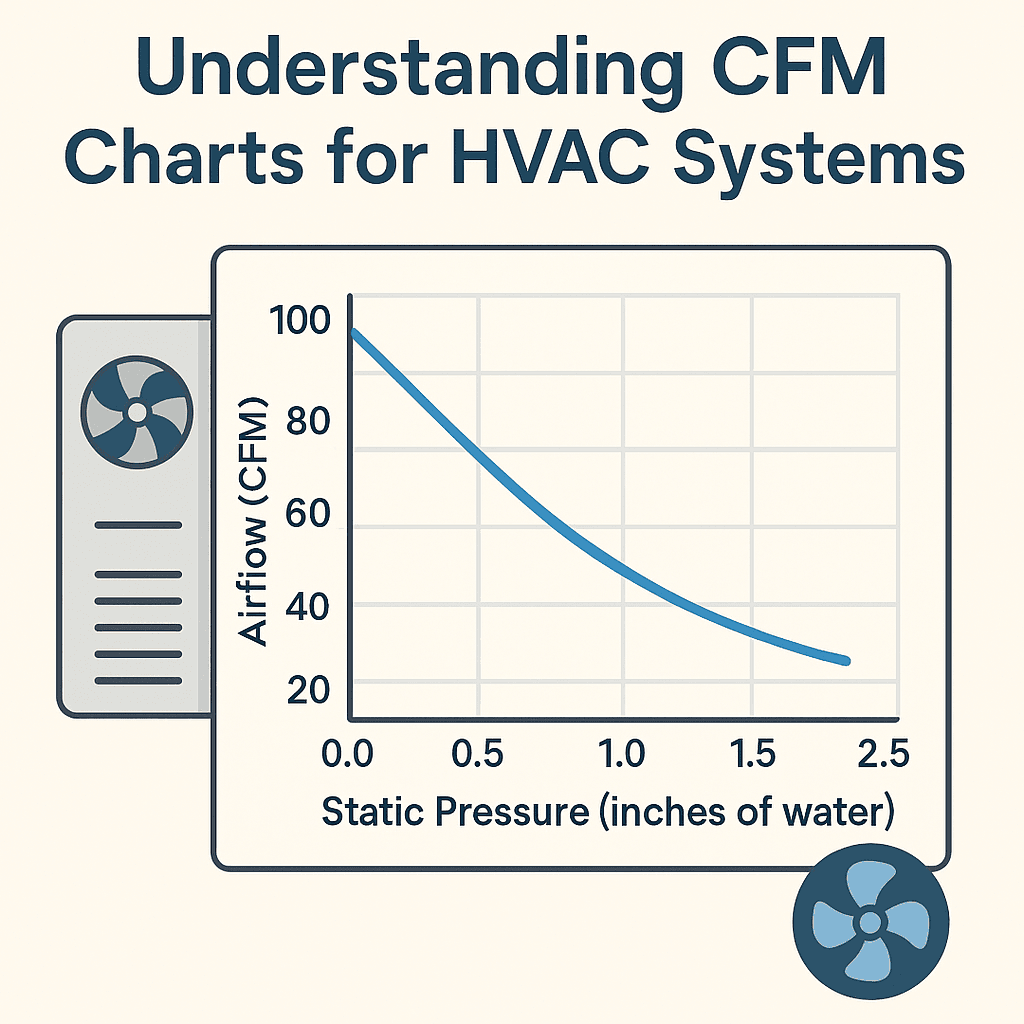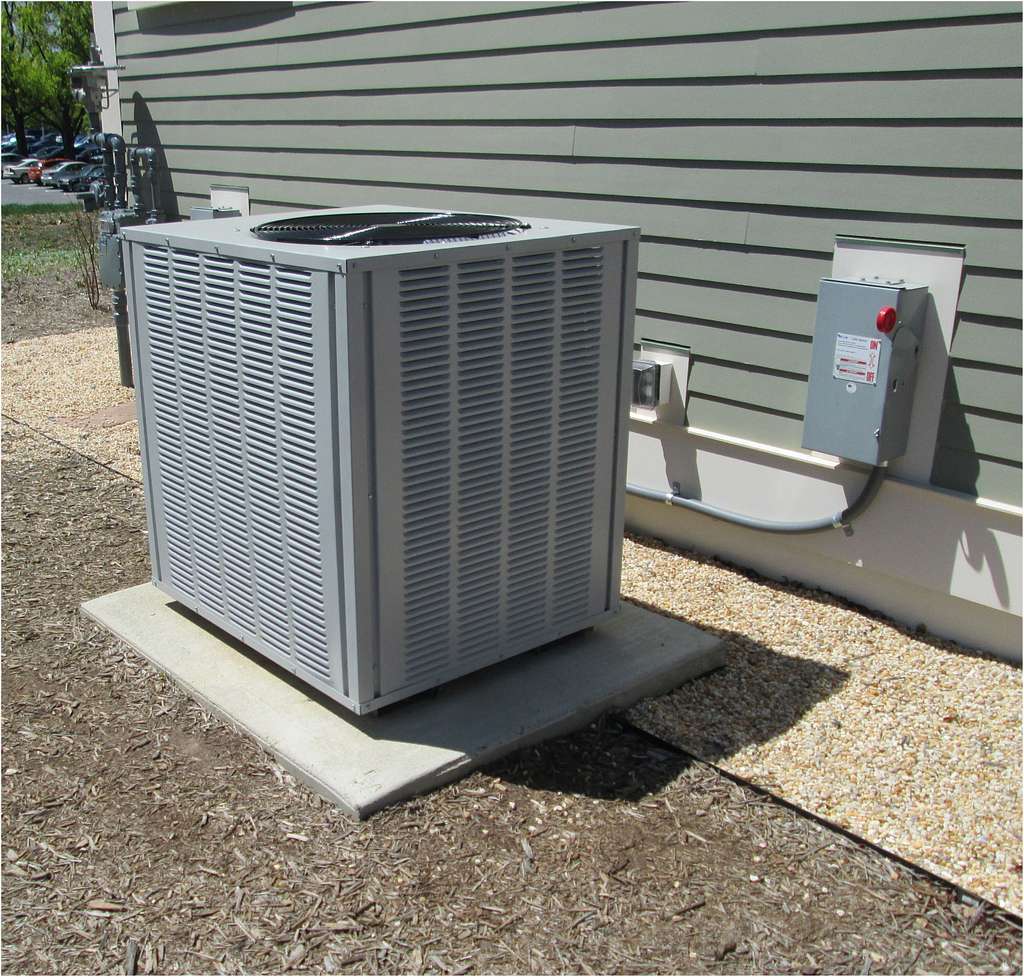Understanding the nuances of your HVAC system can seem like a daunting task. But, it doesn’t have to be.
One key aspect to grasp is the concept of CFM, or Cubic Feet per Minute. This is a measure of airflow volume, crucial for the efficient performance of your HVAC system.

CFM Charts for HVAC Systems are your go-to tool for this. They help you determine the right duct size for a given room or space, ensuring efficient airflow.
Whether you’re a small business owner, a work-from-home professional, or a stay-at-home mom, understanding CFM charts can help you maintain a comfortable indoor environment.
In this guide, we’ll delve into the importance of CFM charts, how to use them, and when to seek professional assistance for ductwork issues.
So, let’s demystify the world of HVAC systems together, starting with CFM charts.
The Basics of CFM in HVAC Systems
CFM stands for Cubic Feet per Minute. It’s a measure of how much air flows through your HVAC system within a minute.
Think of CFM like the heart of your HVAC system. Just like your heart pumps blood, CFM moves air.
Why is this important? Proper air circulation is essential for comfort and efficiency.
Here’s a quick overview of why CFM matters:
- Comfort: Ensures even heating or cooling throughout a space.
- Efficiency: Keeps your system from overworking, reducing wear and energy costs.
- Air Quality: Supports consistent air turnover, filtering out pollutants.
Inadequate CFM can lead to hot or cold spots. That means some rooms may feel too warm while others are chilly.
Proper CFM levels help your HVAC system perform optimally.
That’s why understanding CFM and how to use CFM charts is crucial. It can improve both comfort and efficiency in your space.
How to Use CFM Charts for Duct Sizing
A CFM chart is an essential tool for sizing ducts. It’s your guide to ensuring that air flows smoothly through your HVAC system.
First, let’s discuss the return air duct sizing chart. This chart helps determine the size needed for returning air to your unit. It’s vital because return ducts impact how air circulates back to the system.
A well-sized return duct ensures balanced airflow. It maintains pressure levels that support efficient system operation. Too small, and your system might struggle to pull enough air, leading to inefficiencies.
Next, there’s the flexible duct CFM chart. Flexible ducts are common in spaces where rigid ducts aren’t suitable.
These charts help gauge airflow capacity specific to flexible materials. Flexible ducts offer versatility, but sizing them correctly is crucial for function.
The role of duct size is fundamental in airflow efficiency. Larger ducts allow more air, reducing strain on your HVAC unit.
Small ducts can choke airflow, creating resistance. This can cause the unit to work harder, impacting both efficiency and longevity.
When using these charts, always consider your space’s unique needs. Factors like room size, HVAC capacity, and layout matter.
Here’s a quick list to guide your duct sizing:
- Check Room Dimensions: Measure length, width, and height.
- Evaluate HVAC Capacity: Ensure it’s suited to your space size.
- Match Duct Size to CFM Needs: Use CFM charts for best match.
- Consider System Type: Be mindful if using flexible ducts.
Proper duct sizing isn’t just about charts. It’s about understanding airflow dynamics. That ensures your system delivers optimal comfort with minimal effort.
Use these tools wisely to maintain a comfortable environment. For complex situations, consulting a professional can offer peace of mind.

Tools for Calculating Duct Size
Having the right tools can make all the difference in duct sizing. Let’s explore some essential ones to streamline the process.
The flex duct calculator is a handy tool for those working with flexible ducts. It helps determine the duct size needed based on airflow requirements.
This calculator simplifies the process. Input the CFM, and it suggests the appropriate size. It’s efficient and saves you time.
An online ductulator is another digital asset. Unlike traditional methods, this tool offers calculations at your fingertips.
Simply enter your parameters, and it provides quick results. It’s accessible, making it ideal for both professionals and DIY enthusiasts.
Static pressure tools and gauges are vital for understanding ductwork performance. These tools measure the resistance to airflow within the duct system.
Static pressure affects how well air moves through your ducts. High resistance can lead to inefficiencies and higher energy bills.
Using these gauges helps identify potential issues. Knowing where pressure builds up can inform necessary adjustments.
Here’s a quick summary of these valuable tools:
- Flex Duct Calculator: For sizing flexible ducts efficiently.
- Online Ductulator: Provides rapid, digital calculations.
- Static Pressure Tools: Measures airflow resistance and identifies issues.
Equipping yourself with these tools leads to better duct planning. It ensures your HVAC system runs smoothly and efficiently. Always prioritize professional guidance when needed to secure optimal results.
When to Consider Professional Ductwork Services
Sometimes duct issues require more than a DIY fix. Knowing when to seek professional help is crucial for maintaining your HVAC system.
First, recognize the signs that indicate a need for AC duct repair. If you notice uneven cooling or strange noises, your ducts may need attention.
Poor airflow can also signal a problem. Duct leaks or blockages are common culprits that affect system performance and indoor air quality.
Hiring ductwork companies near me can be invaluable. Professionals offer expertise that ensures repairs are done right the first time.
Local companies know the area’s specific needs and conditions. This local insight can provide tailored solutions to HVAC issues.

Regular maintenance is key to avoiding costly repairs. Keeping your heating and ductwork in top condition extends the system’s lifespan.
Routine check-ups by a trusted professional can catch potential problems early. Investing in maintenance brings peace of mind and savings over time.
Enlist expert help for duct repairs and maintenance to maximize your HVAC system’s efficiency. It keeps your indoor environment comfortable and hassle-free. When in doubt, always consult with an expert to keep your home in peak condition.
Common Questions and Practical Tips
Understanding ductwork can seem daunting, but a few tips can make it easier. Let’s tackle some common questions together.
How Many Feet of Static Does Each Duct Turn Add?
Static pressure in ductwork can be affected by various factors. A key factor is the turns your ducts take.
For every 90-degree turn, you add equivalent feet of straight ductwork. Typically, it adds about five to seven feet.
Using a static pressure gauge can help measure these changes. This tool assists in ensuring your airflow remains optimal.
Maintaining proper airflow is vital. Knowing how duct turns affect static pressure is valuable for efficiency.
What Size Duct Do I Need for a 12×12 Room?
Room size is crucial in determining duct size. For a 12×12 room, other factors also come into play.
Consider the room’s usage. Does it face direct sunlight? Is it a high-traffic area?
A duct size calculator or an online ductulator offers quick calculations. These tools help determine the right duct size.
Beyond measurements, keep your HVAC system in mind. Is it powerful enough to support the chosen duct size?
Tips for Determining Duct Size
When determining duct size, start by assessing room size and HVAC capacity. These elements dictate the airflow needed.
Write down all room specifics before using a duct size calculator. This preparation helps make accurate calculations.
Be aware of duct material differences. Flexible ducts have different airflow characteristics than rigid ones.
Use a duct cfm table to check potential airflow rates. It provides a comprehensive reference for duct performance.
Understanding when to seek professional help is essential. If duct sizing seems complex, don’t hesitate to call an expert.
Recognizing when your system isn’t working efficiently is critical. Uneven temperatures or high energy bills might be signs.
Professionals can diagnose and suggest solutions quickly. Their expertise ensures your HVAC system works at its best.
With these tips and insights, you’ll be better equipped to manage your ductwork efficiently. And remember, professional help is always a call away.
Conclusion: Ensuring Comfort and Efficiency with CFM Charts for HVAC Systems
Understanding the role of CFM charts and proper duct sizing is vital. It ensures your HVAC system operates smoothly and efficiently.
Accurate duct sizing can significantly impact your comfort and energy use. It is key to maintaining a balanced indoor environment.
Relying on professional expertise can make a big difference. Professionals ensure your system is optimized for peak performance and longevity.
[Call to Action]
Ready to enhance your home’s comfort? Don’t wait until minor issues become major problems.
Reach out to LC Heating and Air Conditioning. Our skilled team is here to provide the reliable HVAC services you need in Los Angeles.


